Plants may be the obvious stars of any given terrarium, but (if you’re open to it), you might find that terrarium driftwood can end up being the real unsung hero.
I’m serious, hardscape is the key to elevating a perfectly nice container of plants to a beautifully complex natural wonderland.
In this article, we’re not talking about any random branch from the local woods. As lovely as they may be… We’re talking about a special group of woods that are perfectly suited to terrariums and can really bring a project to life!
Hardwoods, driftwoods, aquascaping woods; they go by many names – and we’re going to show you the best of them.

Terrarium Tribe is reader-supported. When you purchase through links on our site, we may earn an affiliate commission (at no further cost to you). 💜
Why Use Wood in Terrariums?
Honestly, wood is such a versatile natural material, there are so many great ways that it can elevate a terrarium.
That being said, it’s often how you use it that counts.
- Create a natural-looking landscape – I mean, what rainforest scene have you ever seen that doesn’t have branches?
- Adds depth, structure, and contrast – In short, it makes terrariums interesting! Endlessly adding plants has diminishing returns in terms of visual aesthetics, but adding the dynamic texture and shape of these driftwoods really makes a difference.
- Opportunities for 3D planting – Branches are meant to be grown on, right? Adding moss and epiphytes to our terrarium wood literally brings it to life and lets you explore areas at the top of your terrarium that are often just empty space.
Seriously, Driftwood is one of the best hardscape materials.

What’s so Special About Terrarium Wood / Terrarium Driftwood?
There’s a variety of woods selected for aquascaping, terrariums, and vivariums, but they all share one quality that makes them special.
They’re all typically hardwoods (with some caveats).
It’s important in a high-humidity environment like a tropical terrarium. These woods are resistant to moisture and, therefore, mold and rot. Meaning they can live happy and stable lives in your terrarium for a long time.
Just to remove any confusion, they’re commonly called terrarium “driftwood,” too, presumably because driftwoods are naturally hardwoods (how else could they survive the sea/rivers?).
Anyway, let’s see them!
Types of Terrarium Wood for Sale
#1: Spiderwood
Spiderwood is a wonderfully intricate driftwood with crazy abstract shapes that can really add a wild element to a terrarium.
It’s often best to grab a selection of smaller pieces that you can shape/assemble to create the exact design that you need. It’s technically a softwood, too, which means it’ll be easier to work with but won’t last indefinitely.
Spiderwood is the name for wood from the roots of a variety of different tree species, including Azalea Wood, Black Forest Spiderwood, and Redmoor Wood (mostly in the UK).
Check out our full guide to Spiderwood in terrariums for more info.
👉 Shop Spiderwood on Buceplant.com.

#2: Mopani Wood
For a hardwood from the plains of Africa, Mopani Wood sure can repel moisture with the best of them.
With a gorgeous two-tone color and deeply twisted structure, it’s always a visually interesting addition to a terrarium.
It’s as heavy as it looks though, so just bear that in mind as you add it to your project.
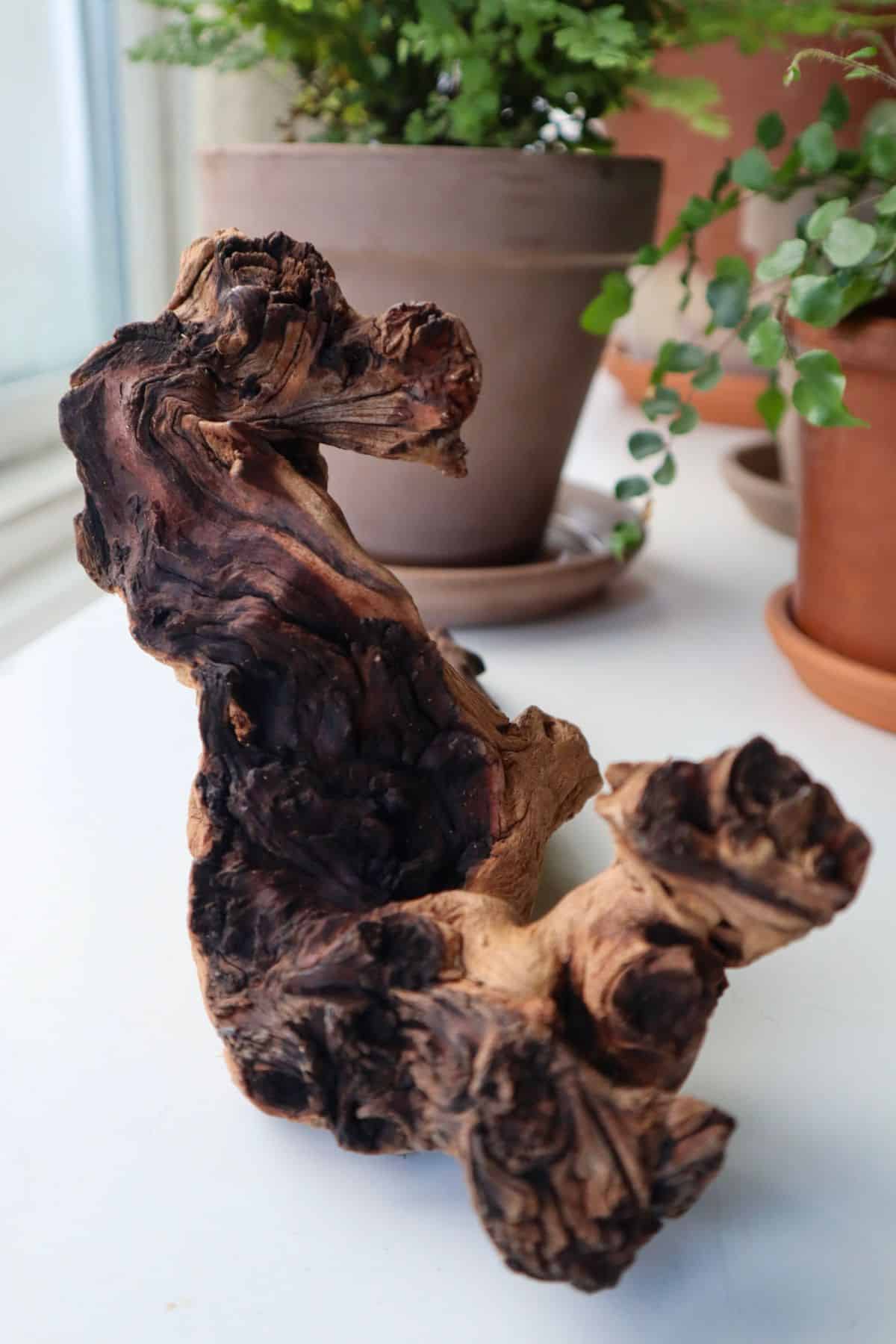
#3: Manzanita Wood
Manzanita Wood is a thin, heavily branched wood that can be used to great effect in creating a tree-like aspect.
It has quite a smooth texture, so it’s not the easiest terrarium wood for planting on, but you can effectively wrap/glue moss to it for that tree effect.
It’s naturally a reddish colour but you’ll often find it’s been sandblasted to a pale tan.
👉 Shop Manzanita Wood on Buceplant.com.

#4: Cork Bark
Okay, so this is technically a bark, but its utility in terrariums is so great that cork bark has to make this list of best woods.
The fact that it’s literally the outside of a tree makes it arguably the most natural-looking material. Which is why it’s often favored for terrarium backgrounds, as you’re able to easily sculpt it into whatever shape you need.
Seemingly impervious to moisture, cork bark is an easy choice for any tropical terrarium build.
👉 Shop Cork Bark on the Terrarium Tribe store.

#5: Dragon Wood
Much like the stunning aquascaping rock of choice, Dragon Stone, Dragon Wood is a jagged, imposing driftwood.
Full of spaces for weaves vines to thread, or epiphytes to attach.
A new favorite of mine? Yes, I think so.

#6: Ghostwood (California Driftwood)
With a name like “ghostwood,” the nerd in me already wants it…
This stunning white driftwood is full of character, with complex twisted branches and a gnarled texture throughout. Great for adding moss!
What’s great about Ghostwood is that it’s highly resistant to moisture (and otherworldly effects), so perhaps this wood, over any other, is going to go the distance in super humid terrariums.
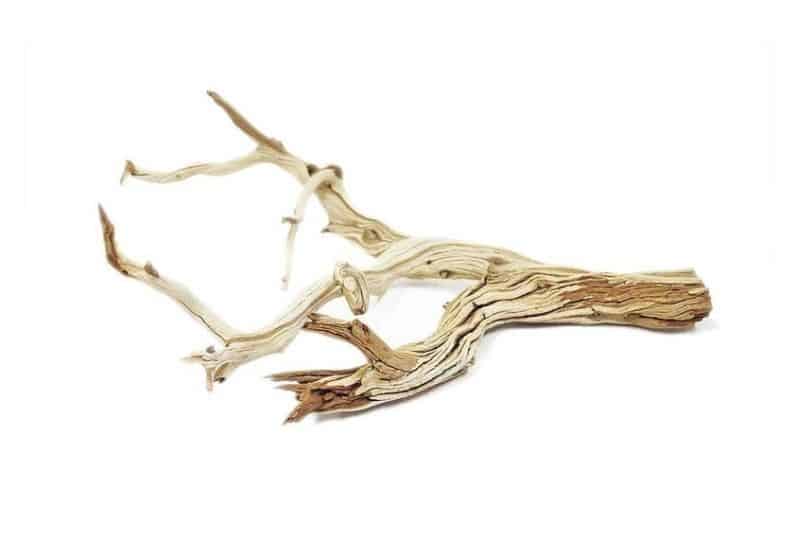
#7: Malaysian Driftwood
This stunning dark hardwood comes from a variety of trees all native to Malaysia.
The shadowy color provides some lovely contrast in an otherwise fresh green terrarium, and the branches always seem to come in an interesting shape (often with lots of nooks and crannies to plant epiphytes into).
This is one of my favorites, but they do tend to come in larger, heavier chunks. So, they’re often better suited to bigger terrariums.
👉 Shop Malaysian Driftwood at Buceplant.com.
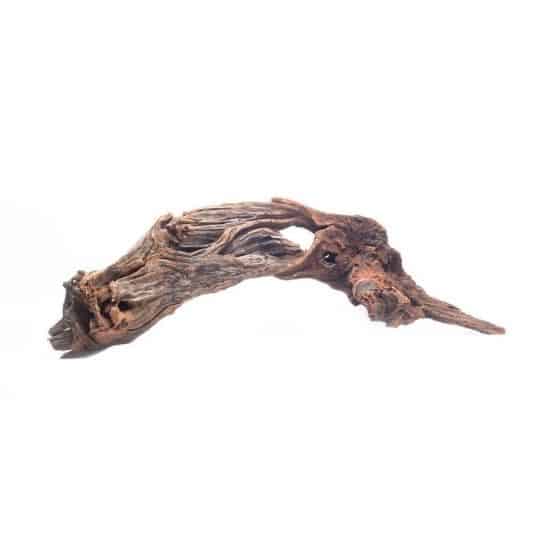
#8: Pacific Wood
Pacific wood is much like its Malaysian equivalent, just with an overall lighter coloration (and presumably a Pacific region origin?).
It also goes by the name of “horn wood” in the aquascaping industry.
Coming in heavier chunks, with little in the way of branches, it’s a good choice for a hardscape that’s destined to anchor the substrate or support the overall structure of a terrarium.
👉 Shop Pacific Wood on Buceplant.com.

#9: Amazon Wood
Amazon wood is the latest (and perhaps greatest) terrarium wood to work with.
With holes, gnarls, and twists galore, it’s full to the brim with character. A fantastic choice for any terrarium build.
👉 Shop Amazon Wood on Buceplant.com.
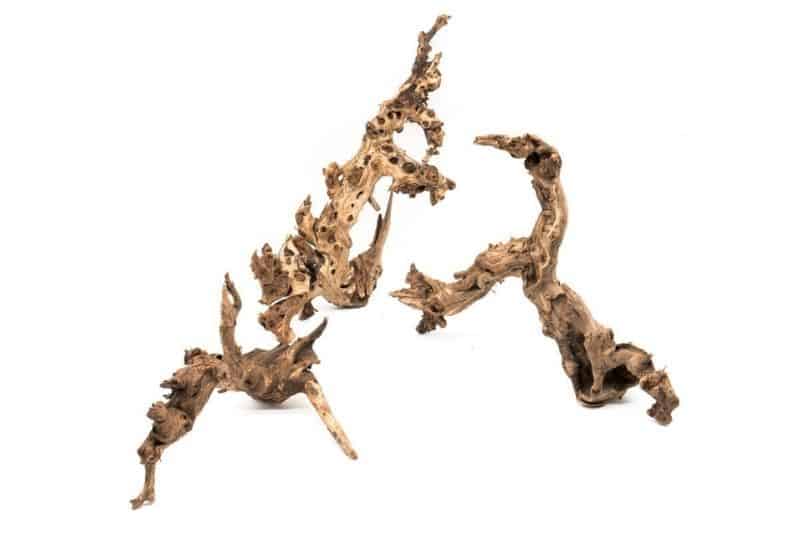
#10: Bonsai Wood
Speaking of living tree effects, here’s the real deal.
Bonsai wood is a stunning way to create your very own custom bonsai tree by attaching any combination of epiphytes and moss as you wish.
The densely branched tips make perfect plant holders; you probably won’t even need to attach them.
They’re hand-crafted from a variety of woods (though I’ve no idea how), meaning they come in all shapes and styles – so be sure to check out the full collection on sale.
👉 Shop Bonsai Wood on Buceplant.com.
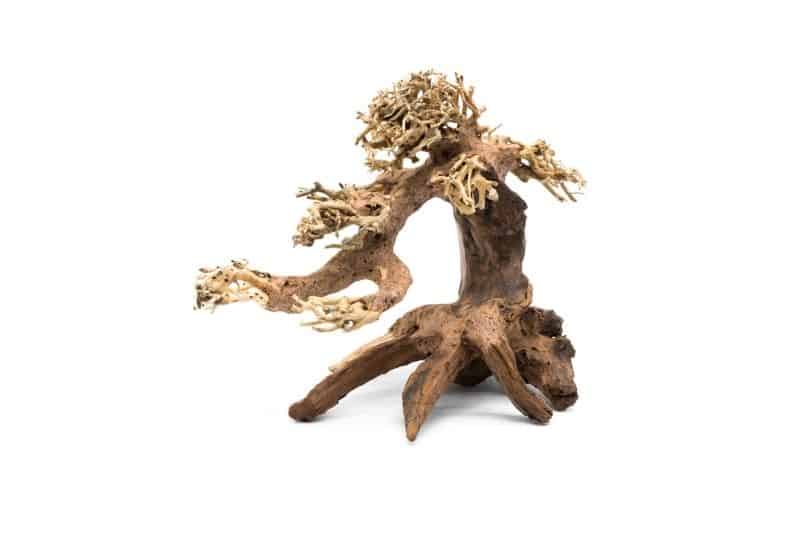
#11: Tigerwood
Tigerwood is kinda like spiderwood on steroids…
A real tangled mass of roots around a central stump makes it an interesting focal piece for a terrarium.
Coming in a variety of (crazy) shapes and sizes, it might take some looking to get the ideal piece, but it’ll be worth it!
👉 Shop Tigerwood on Buceplant.com.
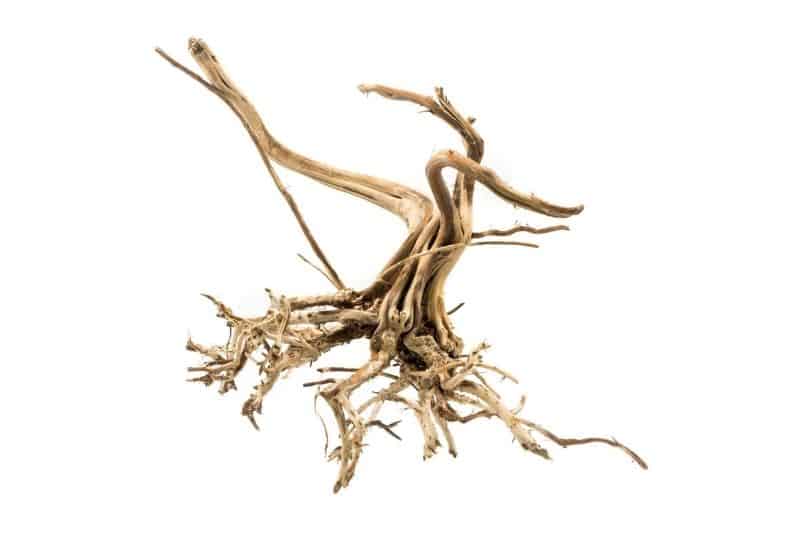
#Bonus: Cholla Wood
With an intricate lattice of holes perforating a thick wooden tube, there’s nothing quite like Cholla Wood.
The unique structure makes for an interesting piece, and it also provides lots of planting spaces for epiphytes.
It’s a softwood, so it’s important to use it in the right environments (bioactive ones for starters), but the opportunities are endless when you know how to get the best from it.
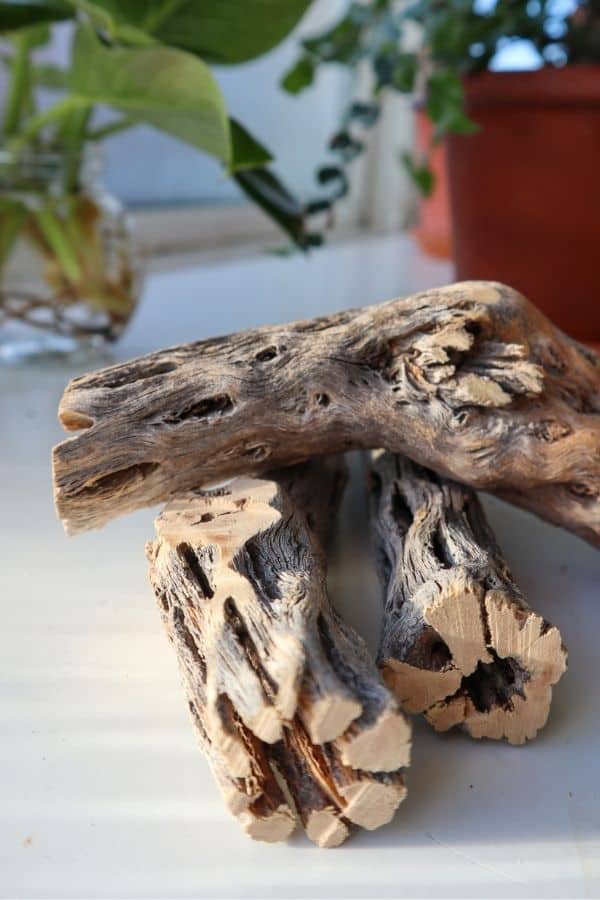
Now It’s Your Turn
Which terrarium wood takes your fancy?
Or have I missed your favorite? Let me know in the comments!
Though we’re not yet selling wood for terrariums, we are selling a wide range of supplies on our terrarium store!

I have recently received two fantastic pieces of Java crown driftwood but cannot not seem to find any info on whether they are terrarium suitable
I’ve not came across that one before, but I imagine if it’s for sale in aquarium stores it’s probably fine.